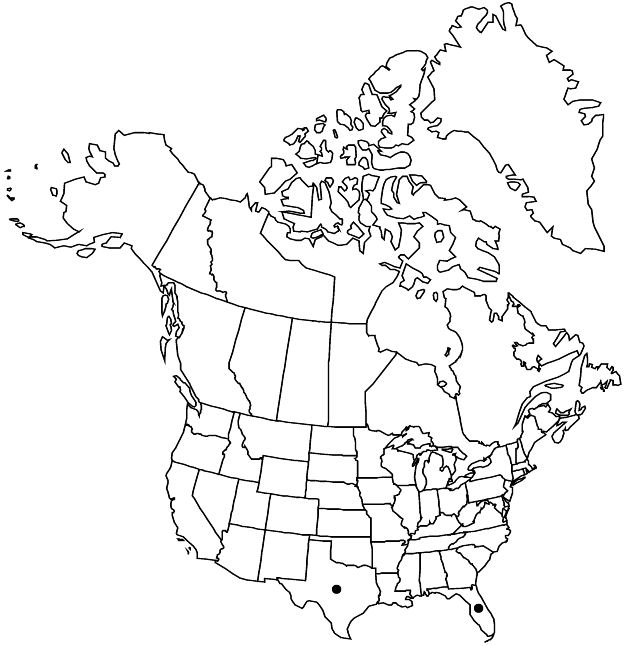Difference between revisions of "Sida elliottii var. parviflora"
Fl. South. U.S. ed. 3, 48. 1897.
Treatment appears in FNA Volume 6. Treatment on page 314.
FNA>Volume Importer |
FNA>Volume Importer |
||
| Line 47: | Line 47: | ||
|publication year=1897 | |publication year=1897 | ||
|special status= | |special status= | ||
| − | |source xml=https://jpend@bitbucket.org/aafc-mbb/fna-data-curation.git/src/ | + | |source xml=https://jpend@bitbucket.org/aafc-mbb/fna-data-curation.git/src/8f726806613d60c220dc4493de13607dd3150896/coarse_grained_fna_xml/V6/V6_572.xml |
|subfamily=Malvaceae subfam. Malvoideae | |subfamily=Malvaceae subfam. Malvoideae | ||
|genus=Sida | |genus=Sida | ||
Revision as of 18:48, 18 September 2019
Herbs, to 0.5 m. Leaf blades 2–6 cm, margins usually purplish. Pedicels 0.5–4 cm. Flowers: calyx 6–9 mm, stellate-hairy basally. Mericarps spinose apically, spines 0.2–0.7 mm.
Phenology: Flowering spring–fall.
Habitat: Sandy soil to rocky limestone slopes
Elevation: 0–100 m
Distribution

Fla., Tex., Mexico, Central America (Guatemala).
Discussion
Variety parviflora occurs generally south of 29°N latitude.
Selected References
None.
Lower Taxa
None.